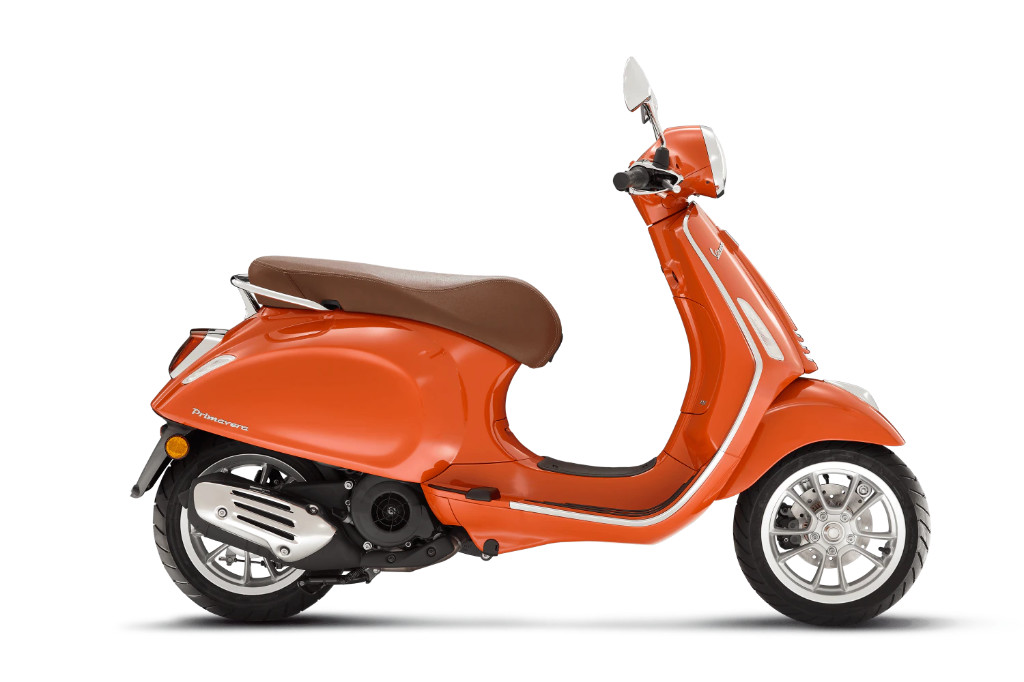The Vespa brand has always stood for further development, modernity and zeitgeist. It is no coincidence that the popularity of the Italian classics is at a new high. The reason for this is currently the extremely popular GTS and Primavera models, which have been running with the ultra-modern iGet engine since 2017.
Euro 4 as the new approval regulation
While until 2017 only the Euro 3 standard was required for a new registration, from 01.01.2018 a new registration was only permitted with a Euro 4 standard. From 01.01.2017, no new Euro 3 engines were allowed to be produced. Therefore, Piaggio introduced the iGet system with the specially developed single-cylinder four-stroke engine during the year. I-Get stands for “Italian Green Experience Technology”, with which the group -forced- to take a step in the direction of exhaust gas reduction.
Thanks to electric injection, fuel consumption was reduced to less than three litres per 100 kilometres in some cases. In addition, a responsive cooling system was designed on the right-hand side of the four-valve engines. The arrangement of the water cooler was first tested on the Piaggio model “Medley” before it was transferred to the various Vespas.
The future of engines?
For six years now, the iGet engines have been installed in many model series. But even now the subject is still hotly debated by many Vespa riders. Apart from the low fuel consumption and smooth engine running, the main advantage is, of course, the reduced impact on the environment and nature. On the other hand, passionate “Vespisti” repeatedly speak of significant losses in acceleration and top speed. According to experts, acceleration is excellent up to just over 50 km/h, but after that it is completely disappointing up to the top speed of 91 km/h. The highly praised design of many of the old models is a real advantage. Unfortunately, the scooters’ effervescence, which was highly praised in many of the old models, was lost with the changeover to the new generation of engines.
However, the following technical data of the 125 cc Sprint model series makes it hard to see the supposedly significant differences:
2016: 8.1 kW (11.01 hp) at 7,700 rpm and top speed of 91 km/h
2022: 8.1 kW (11.01 hp) at 8,000 rpm and top speed of 91 km/h
New-generation injection system
The injection system is also a revolution of a special kind. It has been equipped with a sensor that ensures optimum fuel supply to the combustion chamber in all situations. The result is a balanced and reliable driving experience in every situation.
As with previous model series, a modular concept has been developed for this generation, which can be applied to different displacement classes. Depending on the requirements, gas control with three or four valves can be used.
The tinkerer is dying out
Out of all these remarkable advantages or disadvantages, one point is becoming increasingly clear. Classic Vespa mechanics, who carry out repairs themselves in the garage at home, are slowly but surely dying out. The technology used can only be maintained with the greatest professional know-how and the appropriate tools. Customer service is only recommended in specially trained workshops. There are no dirty hands for experienced mechanics – much to the delight of the partners.
Nevertheless, the Vespa brand remains on everyone’s lips, especially thanks to the newer models. But as a true “Vespisti”, you have to be able to live with losses in performance and acceleration.
Source cover picture: www.vespa.com


